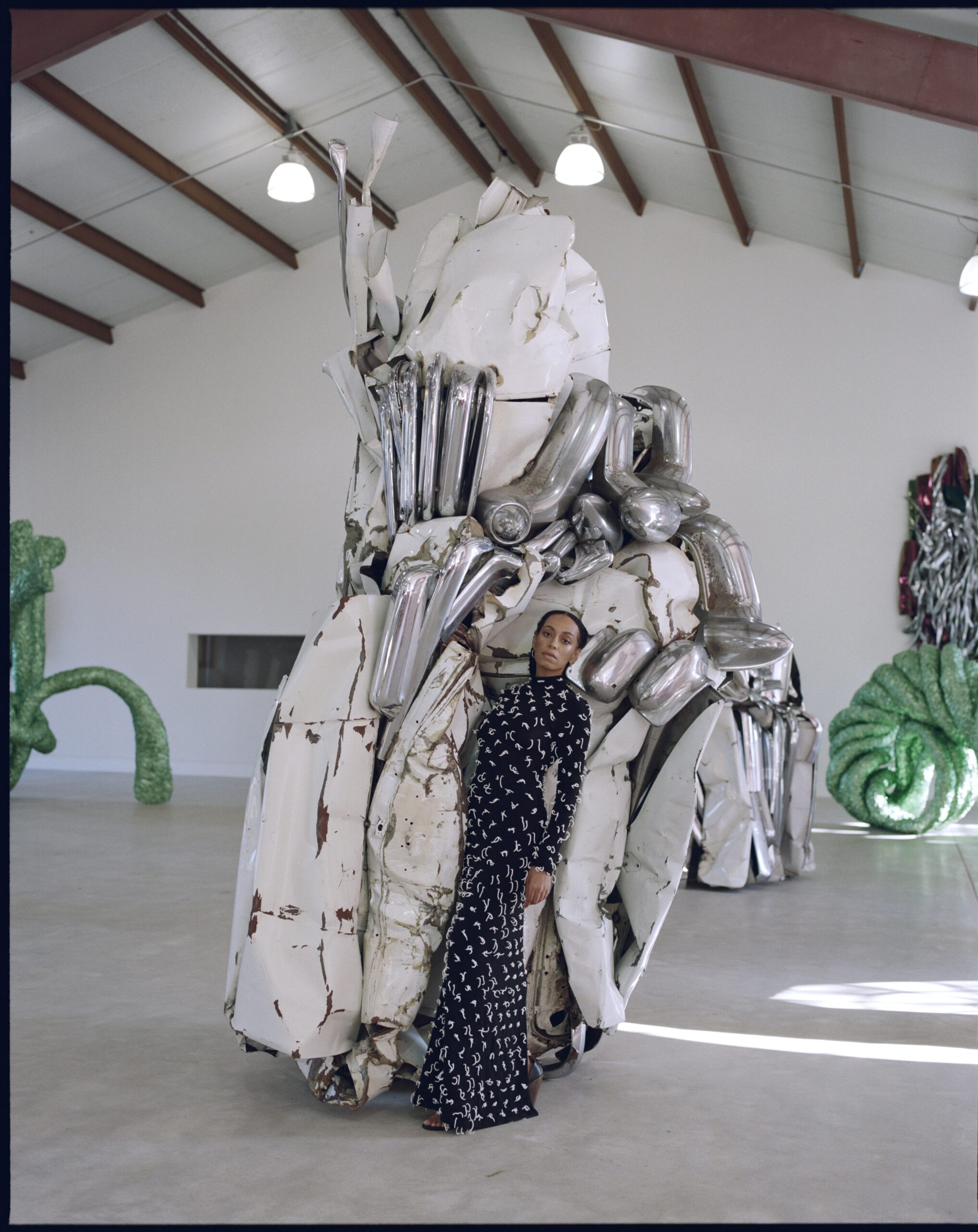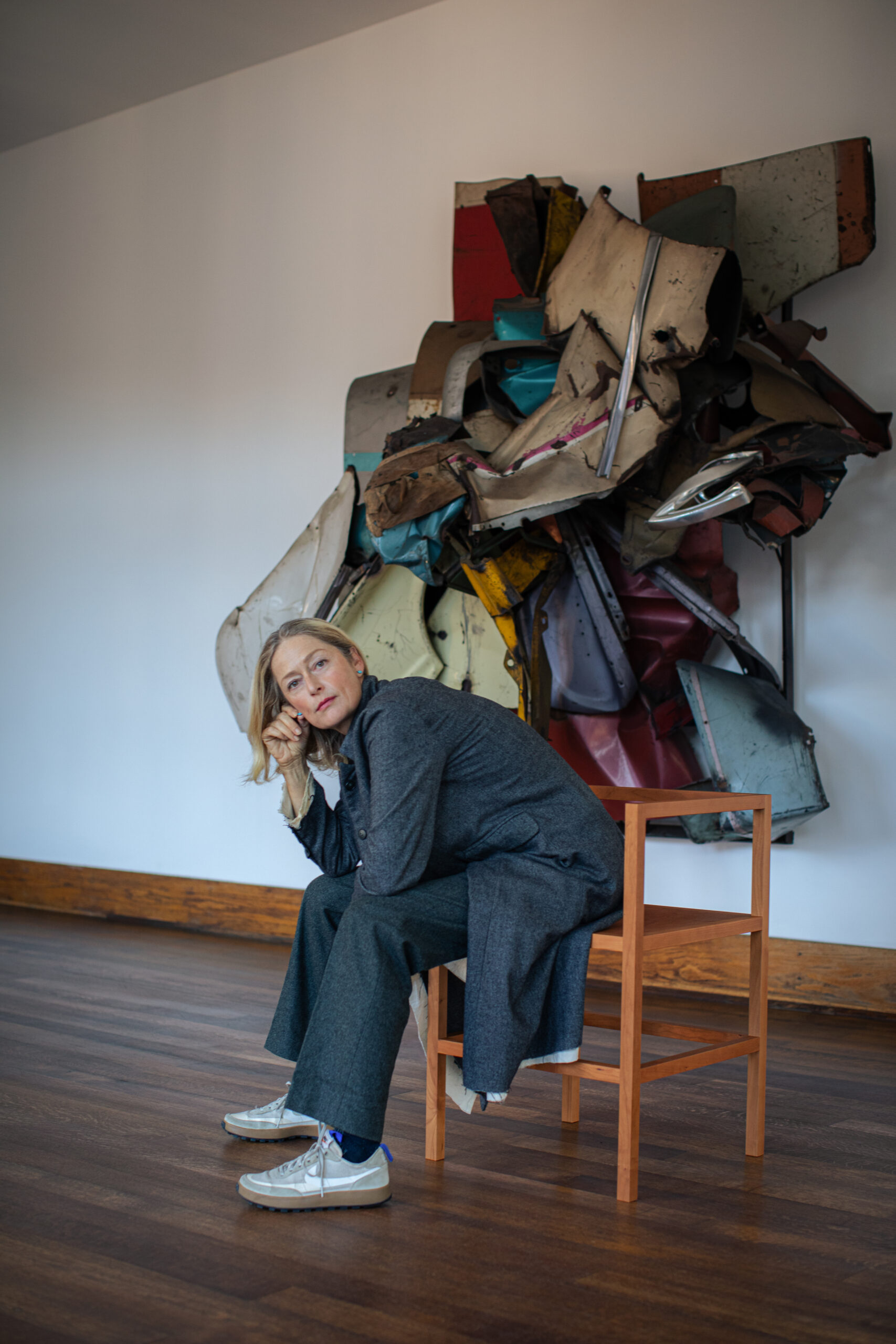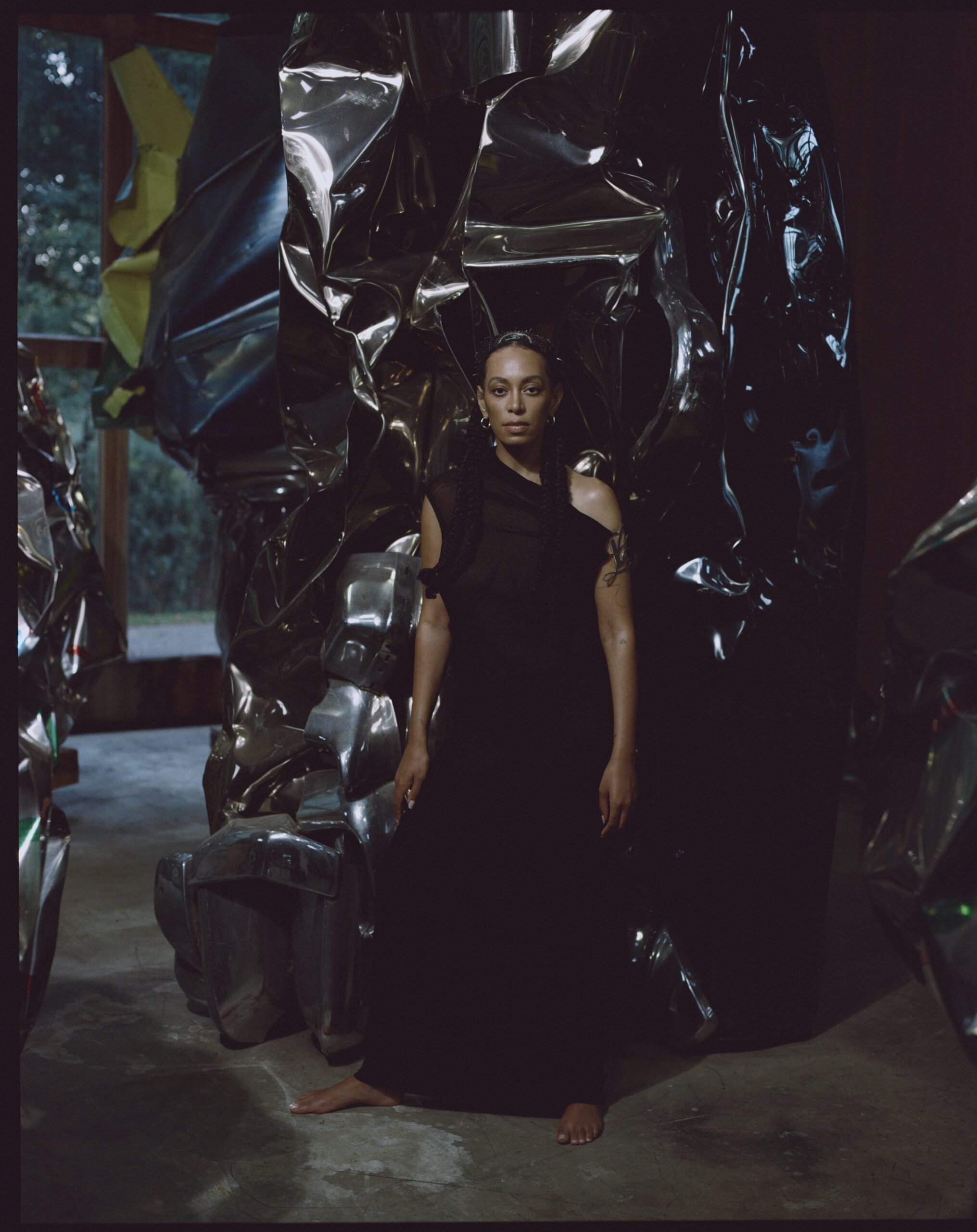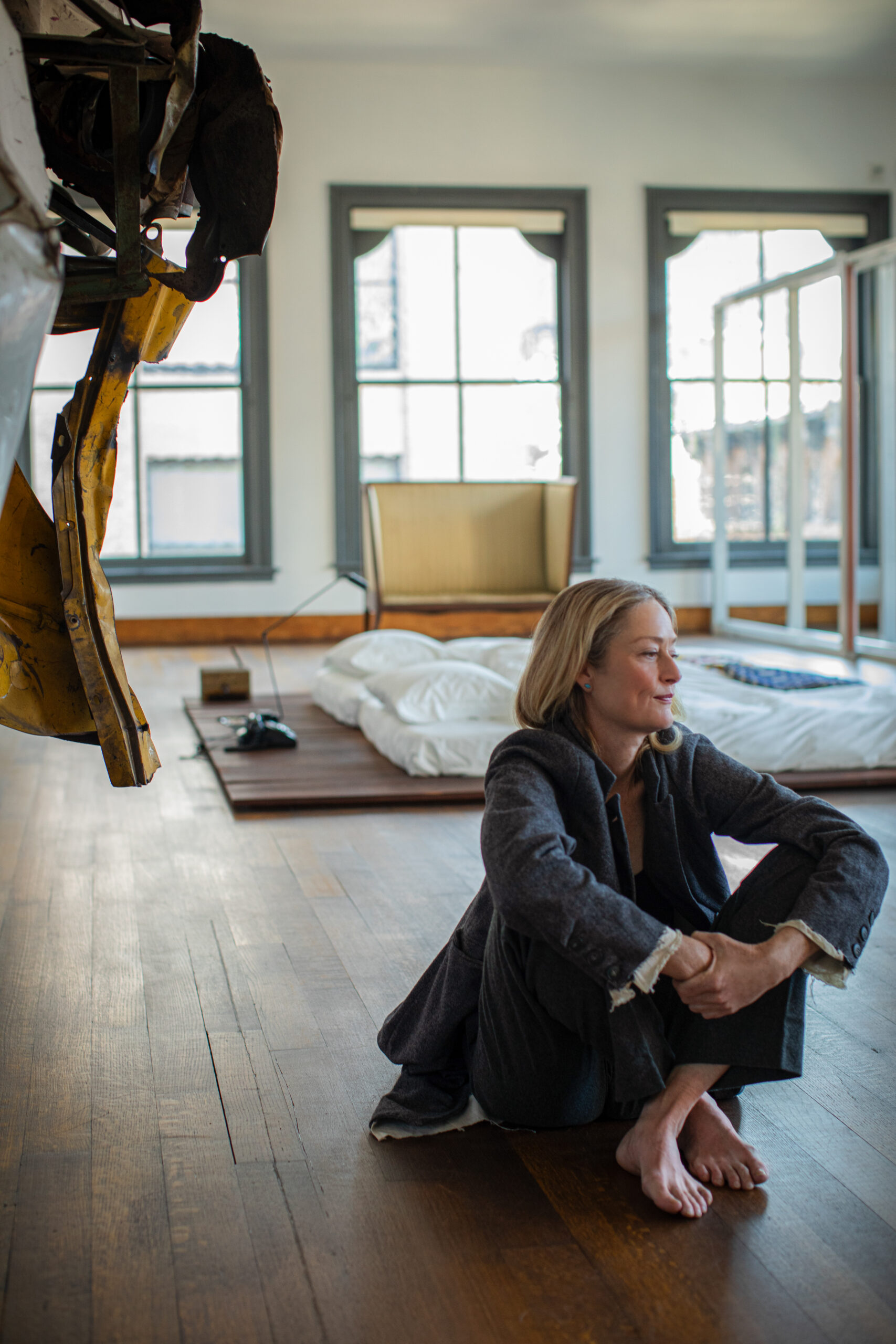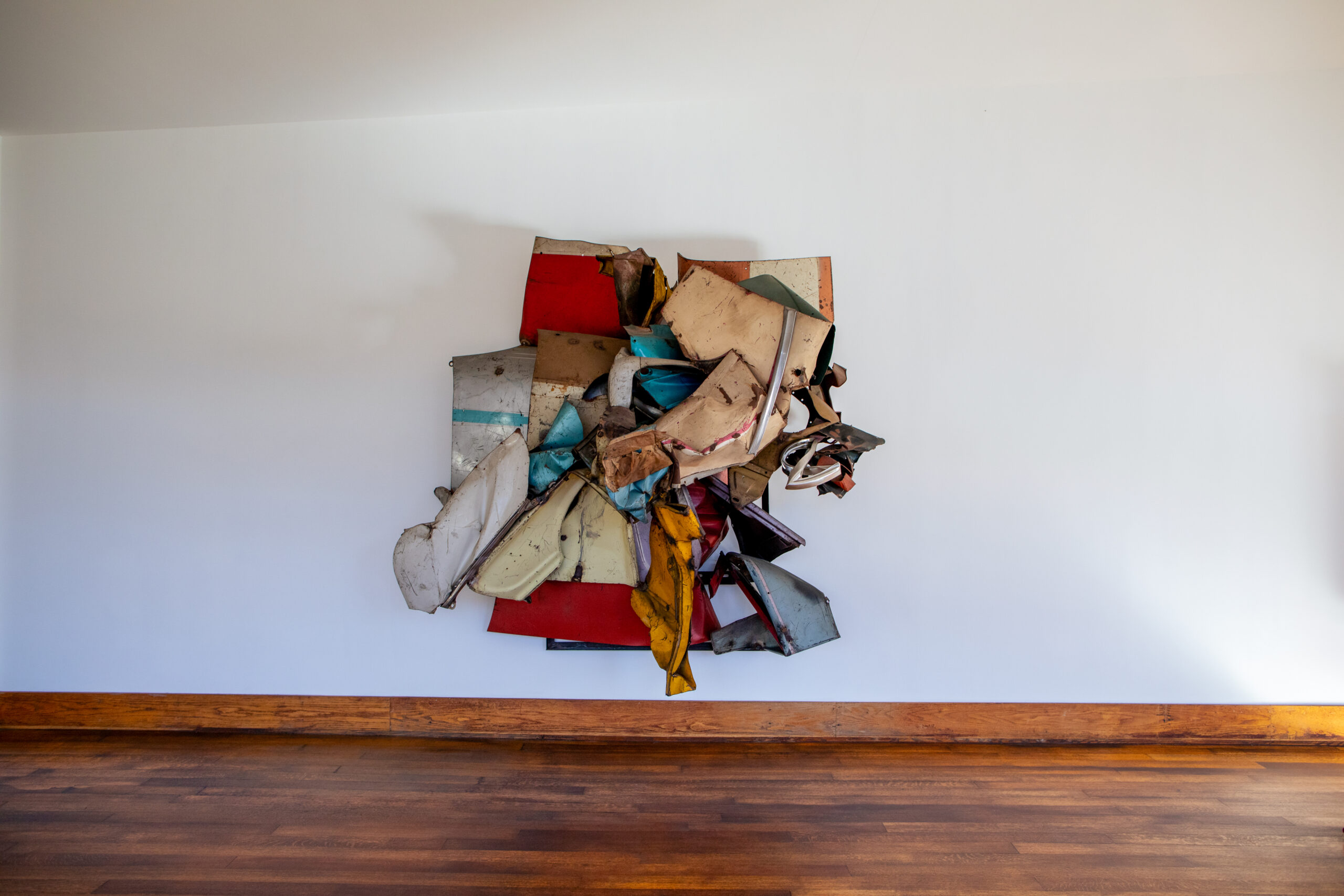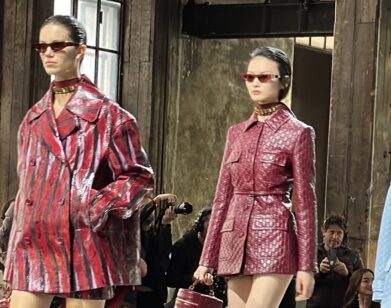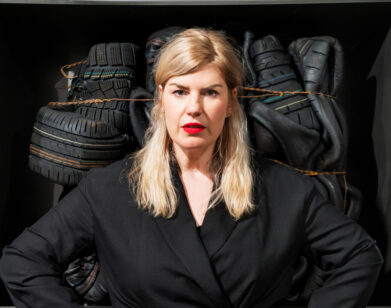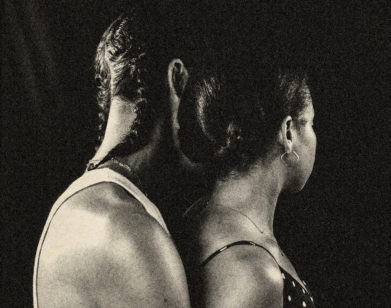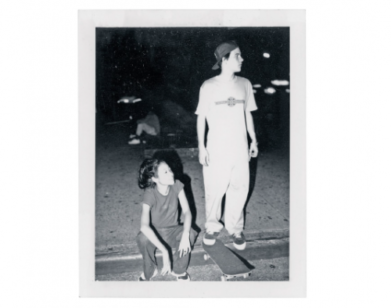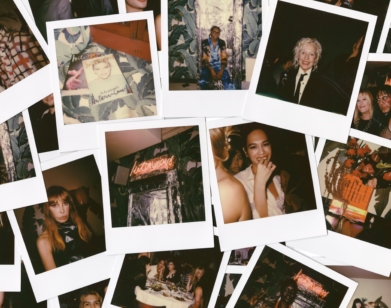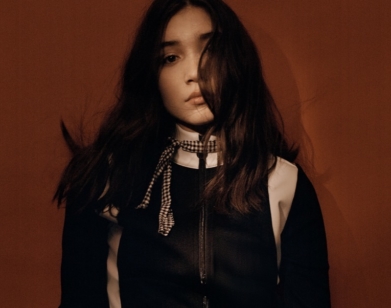EXCERPT
“Collision and Chaos”: Rainer Judd and Solange Knowles Explore the Legacy of John Chamberlain
Later this month, publishing giant Assouline will release Living With Chamberlain, a brand-new volume commemorating the life and legacy of the late sculptor and filmmaker John Chamberlain, who died in 2011. Among the luminaries and devoted fans who shared their experiences of his work in the book, which features a foreword by Rick Owens, are the artists Rainer Judd and Solange Knowles. Below, in an exclusive excerpt, the duo talk to one another about Chamberlain’s fighting spirit and how his ecstatic expressions of creativity influenced them in their own lives.
———
RAINER JUDD: I’ve been thinking about John as a person who also made art. I was thinking about the role that he played in my life. There are very few people I can think of who had as much freedom within themselves. He was a force when he walked in the room. He did what he wanted. I think that has so much to do with what he ended up making, how he realized so much, invented so much. And it led me to wonder if there’s somebody in your childhood that had a kind of outsize quality. I’m curious whether somebody, just by their existence, gave you the possibility of freedom of expression?
SOLANGE KNOWLES: Definitely. The one that immediately comes to mind is my Uncle Johnny. I feel very lucky to have had someone like him, a very fierce, outspoken energy. I think a lot of the adults in my life, as I would go to school and visit other family members or friends of the family, always tried to sort of quiet those parts of myself, and my Uncle Johnny would always encourage me to make them louder. It was this space that he demanded in whatever room he walked in. And I think that for him to be a gay man in the 1980s in Houston also informed a lot of the ways that he demanded space.
JUDD: Maybe people who have to fight for themselves become warriors for their own freedom. They have a certain righteousness; life is more precious because they’ve had to fight for it.
KNOWLES: It’s so true. He had a fighter spirit. Often people think of that kind of fighter spirit as confrontational or they’re uncomfortable with the confrontation that goes alongside that. And he really embraced that and encouraged that in me. He did instill a voice in me that still resonates strongly today. I came across Chamberlain’s work for the first time at the Chinati Foundation, in probably 2008 or 2009, and I had a visceral response to the work. I feel like I saw a lot of myself and my process in the work, in that I maximize and then minimize. I saw his sculpture and I felt like there was a synergy. When I would go into a new city, I would look up the museums and see if they had Chamberlain pieces. Both the Menil and the Museum of Fine Arts Houston had pieces that I was able to visit over time. I think one of the things that also connected with me was his naming a lot of the pieces after Texas towns. Do you know much about his time in Texas, making the works that are at Chinati?
JUDD: He would get a little restless in Marfa because it wasn’t quite as high-energy as he was. There were other artists, like David Novros or Claes Oldenburg, who would join my dad in the ideas and the striving for what he was doing here. But John said my dad was kind of corny about what he was doing in Marfa. So again, it’s John being not hindered by the way everybody else was behaving. I recall him feeling a little dangerous when I was a teenager. Like, he might fall out of the window, just a little on edge.
KNOWLES: You definitely feel that through the work—so much collision and chaos. You feel those things, so it wouldn’t surprise me.
JUDD: You got exposed to John’s work in the Chamberlain Building at Chinati Foundation?
KNOWLES: Yes, that was my first time seeing the work. Obviously there’s a very small portion of the world who could be a collector of Chamberlain, but that doesn’t mean you cannot have a profound connection with the work. The way I’ve experienced it, I’ve been able to make it a part of my world—traveling and experiencing new places and seeing it in so many different environments. With someone like you, who had this type of access, I’m curious what living with the work so closely feels like? How actually being immersed with the work feels, how that must feel to see it in different times of day, does it come alive differently in the darkness?
JUDD: I think the art, particularly the Oldenburg and the Chamberlain and the Stella, the big pieces, my dad’s work, is a challenge as to, what are you going to do? I think that’s one of the best things to get from art—a kind of possibility. I feel like their art hopefully gives some opportunity or an opening of a door in somebody’s mind. Did it give you any sense of possibility when you saw John’s work?
KNOWLES: Absolutely. I go back to that maximalist-minimalist idea. I think a lot of times when I’m working on projects, whether it be a song or a sculpture or a curatorial project, I’m collecting all these ideas and expanding as widely as I can before I hone in on that one centerpiece, like, this is it. So I think in seeing that work, I could get a sense of the possibilities, because I imagine that the process was very tedious, collecting all these things and materializing them, and it feels minimal but also very intuitive.
JUDD: John didn’t appreciate the over-intellectualization of art. He’s making art from a place that’s really passionate and committed but he’s not going through a whole academic framework. And I think that’s why he’s for everybody.

